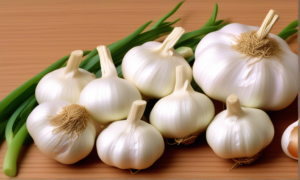 Unraveling the Myth: Is Garlic Detrimental for Diabetes? Doctor's Advice on 4 Foods to Limit for Blood Sugar Control
Introduction:Diabetes, a chronic metabolic disorder with an elusive origin, has emerged as a global health concern. According to statistics from the International Diabetes Federation, the global diabetic population has reached a staggering 425 million, with over 150 million in China alone. Maintaining elevated blood sugar levels not only affects vital organs like the brain, heart, blood vessels, kidneys, and liver but can also lead to abnormalities in various bodily systems.
While diabetes itself isn't terrifying, the potential complications it triggers can significantly compromise overall health. For individuals with diabetes, dietary choices play a pivotal role, requiring careful attention to blood sugar control. There's a common belief that garlic is a diabetes "trigger," allegedly causing the onset of diabetes. But is there any scientific basis for this claim?
Factors Contributing to the Rising Diabetes Cases:
Unhealthy Lifestyle:Modern sedentary lifestyles, high-sugar, high-fat diets, lack of exercise, and chronic stress contribute to widespread obesity, increasing the risk of diabetes.
Genetic Factors:Diabetes has a substantial genetic component. A family history of diabetes elevates the risk of developing the condition.
Aging Population:Advances in medical technology leading to longer lifespans contribute to an aging population, increasing the risk of diabetes in older individuals.
Environmental Factors:Environmental pollution, exposure to chemicals, and changes in dietary patterns also impact the risk of developing diabetes.
Common Symptoms of Diabetes:
Polydipsia (Increased Thirst):Elevated blood sugar stimulates the thirst center, leading to increased water intake due to excessive urination and fluid loss.
Polyuria (Frequent Urination):Excessive and frequent urination is a hallmark symptom of diabetes.
Polyphagia (Excessive Hunger):Inadequate utilization of glucose causes hunger, stimulating overeating.
Weight Loss:Insufficient glucose utilization prompts the body to break down fats and proteins, leading to weight loss.
Fatigue:Reduced energy supply due to poor glucose utilization results in fatigue.
Blurred Vision:Changes in eye lens osmolarity due to elevated blood sugar levels can cause blurred vision.
Hazards of Poor Blood Sugar Control:
Cardiovascular Diseases:Prolonged high blood sugar damages endothelial cells, increasing the risk of cardiovascular diseases.
Renal Damage:Long-term elevated blood sugar burdens the kidneys, causing structural and functional changes, eventually leading to kidney failure.
Retinal Changes:Persistent high blood sugar induces retinal vascular changes, leading to serious consequences like visual impairment and blindness.
Neuropathy:Long-term high blood sugar damages nerve cells, causing symptoms like numbness, pain, and sensory abnormalities, potentially leading to amputation.
Increased Infection Risk:High blood sugar promotes bacterial growth, increasing the risk of infections in the skin, urinary tract, respiratory tract, and more.
Compromised Immune Function:Prolonged high blood sugar impairs immune cells, reducing the body's resistance to infections and making disease control challenging.
Debunking the Myth: Garlic as a Diabetes Trigger:Contrary to the misconception that garlic is a diabetes trigger, this belief lacks scientific merit. While garlic contains allicin, providing a spicy sensation, it overlooks the potential benefits for individuals with diabetes. Garlic is not only safe but offers unique nutritional value.
Nutrient-Rich:Garlic is a nutritionally rich ingredient, containing proteins, minerals, and other elements beneficial for overall health. Regular consumption may contribute to anti-aging, improved immunity, and cardiovascular health.
Blood Circulation and Complication Prevention:Moderate consumption of garlic by individuals with diabetes can promote blood circulation and help prevent complications. Certain components in garlic stimulate insulin secretion, aiding tissue cells in utilizing glucose and stabilizing blood sugar levels.
However, moderation is key, as excessive garlic intake may cause discomfort for some individuals.
Doctor's Advice: Limit These 4 Foods to Avoid Blood Sugar Spikes:
Sugarcane:As a high-sugar fruit, sugarcane should be avoided or consumed sparingly by individuals with diabetes. Excessive sugar intake can rapidly elevate blood sugar levels, exacerbating the burden on the pancreas and worsening the condition.
Glutinous Rice (Sticky Rice):With a high glycemic index, glutinous rice poses a disadvantage for individuals with diabetes. Its rapid conversion to glucose during digestion can lead to swift blood sugar spikes, potentially worsening the condition.
Melon Seeds:While rich in nutrients like protein, vitamin E, and minerals, melon seeds are also high in sugar. Excessive consumption can contribute to elevated blood sugar levels, posing a risk to the health of individuals with diabetes.
Red Dates (Jujube):Despite being considered a health food, red dates have a remarkably high sugar content of around 60%. For individuals with diabetes, avoiding high-sugar foods is crucial to prevent sharp increases in blood sugar levels.
Strategies to Improve Diabetes: Know These 4 Methods!
Healthy Eating:Opt for low-sugar, low-fat foods, increase intake of vegetables, fruits, whole grains, and healthy proteins. Control the intake of carbohydrates and saturated fats, avoiding high-sugar, high-salt, and high-fat foods.
Exercise:Engage in appropriate aerobic exercise and strength training based on individual capabilities. Aim for at least 150 minutes of moderate-intensity aerobic activity per week, such as brisk walking, swimming, or cycling, along with full-body muscle exercises.
Weight Management:Maintaining an appropriate weight is crucial for blood sugar control. For those with overweight or obesity, weight reduction through dietary adjustments and increased physical activity improves insulin sensitivity and lowers blood sugar and cholesterol levels.
Regular Monitoring and Treatment:Regularly monitor blood sugar levels, follow prescribed medication plans, and adhere to medical advice. Correct use of oral medications or insulin injections helps ensure blood sugar levels are well-controlled.
Identifying Diabetes-Friendly Foods: 4 Choices to Keep Blood Sugar Stable
Sweet Potatoes:Rich in fiber and vitamins, sweet potatoes have a low glycemic index, providing energy without causing rapid blood sugar spikes.
Black Beans:High in fiber and protein, black beans aid in controlling blood sugar, slowing down the absorption of sugar from food.
Yogurt:Despite containing lactose, yogurt's high protein and fat content slows down sugar absorption, making it a suitable choice for individuals with diabetes.
Seaweed (Nori):In addition to beta-carotene and vitamins, seaweed contains special polysaccharides that significantly lower fasting blood sugar. It is recommended for individuals with diabetes to consume seaweed soup or broth before meals.
In conclusion, the notion that "garlic is a diabetes trigger" is inaccurate. Individuals with diabetes can safely include garlic in their diet, reaping its benefits with controlled consumption. Additionally, limiting specific foods known to cause blood sugar spikes, adopting a healthy lifestyle, and incorporating diabetes-friendly food choices can contribute to better blood sugar management and overall well-being.
Unraveling the Myth: Is Garlic Detrimental for Diabetes? Doctor's Advice on 4 Foods to Limit for Blood Sugar Control
Introduction:Diabetes, a chronic metabolic disorder with an elusive origin, has emerged as a global health concern. According to statistics from the International Diabetes Federation, the global diabetic population has reached a staggering 425 million, with over 150 million in China alone. Maintaining elevated blood sugar levels not only affects vital organs like the brain, heart, blood vessels, kidneys, and liver but can also lead to abnormalities in various bodily systems.
While diabetes itself isn't terrifying, the potential complications it triggers can significantly compromise overall health. For individuals with diabetes, dietary choices play a pivotal role, requiring careful attention to blood sugar control. There's a common belief that garlic is a diabetes "trigger," allegedly causing the onset of diabetes. But is there any scientific basis for this claim?
Factors Contributing to the Rising Diabetes Cases:
Unhealthy Lifestyle:Modern sedentary lifestyles, high-sugar, high-fat diets, lack of exercise, and chronic stress contribute to widespread obesity, increasing the risk of diabetes.
Genetic Factors:Diabetes has a substantial genetic component. A family history of diabetes elevates the risk of developing the condition.
Aging Population:Advances in medical technology leading to longer lifespans contribute to an aging population, increasing the risk of diabetes in older individuals.
Environmental Factors:Environmental pollution, exposure to chemicals, and changes in dietary patterns also impact the risk of developing diabetes.
Common Symptoms of Diabetes:
Polydipsia (Increased Thirst):Elevated blood sugar stimulates the thirst center, leading to increased water intake due to excessive urination and fluid loss.
Polyuria (Frequent Urination):Excessive and frequent urination is a hallmark symptom of diabetes.
Polyphagia (Excessive Hunger):Inadequate utilization of glucose causes hunger, stimulating overeating.
Weight Loss:Insufficient glucose utilization prompts the body to break down fats and proteins, leading to weight loss.
Fatigue:Reduced energy supply due to poor glucose utilization results in fatigue.
Blurred Vision:Changes in eye lens osmolarity due to elevated blood sugar levels can cause blurred vision.
Hazards of Poor Blood Sugar Control:
Cardiovascular Diseases:Prolonged high blood sugar damages endothelial cells, increasing the risk of cardiovascular diseases.
Renal Damage:Long-term elevated blood sugar burdens the kidneys, causing structural and functional changes, eventually leading to kidney failure.
Retinal Changes:Persistent high blood sugar induces retinal vascular changes, leading to serious consequences like visual impairment and blindness.
Neuropathy:Long-term high blood sugar damages nerve cells, causing symptoms like numbness, pain, and sensory abnormalities, potentially leading to amputation.
Increased Infection Risk:High blood sugar promotes bacterial growth, increasing the risk of infections in the skin, urinary tract, respiratory tract, and more.
Compromised Immune Function:Prolonged high blood sugar impairs immune cells, reducing the body's resistance to infections and making disease control challenging.
Debunking the Myth: Garlic as a Diabetes Trigger:Contrary to the misconception that garlic is a diabetes trigger, this belief lacks scientific merit. While garlic contains allicin, providing a spicy sensation, it overlooks the potential benefits for individuals with diabetes. Garlic is not only safe but offers unique nutritional value.
Nutrient-Rich:Garlic is a nutritionally rich ingredient, containing proteins, minerals, and other elements beneficial for overall health. Regular consumption may contribute to anti-aging, improved immunity, and cardiovascular health.
Blood Circulation and Complication Prevention:Moderate consumption of garlic by individuals with diabetes can promote blood circulation and help prevent complications. Certain components in garlic stimulate insulin secretion, aiding tissue cells in utilizing glucose and stabilizing blood sugar levels.
However, moderation is key, as excessive garlic intake may cause discomfort for some individuals.
Doctor's Advice: Limit These 4 Foods to Avoid Blood Sugar Spikes:
Sugarcane:As a high-sugar fruit, sugarcane should be avoided or consumed sparingly by individuals with diabetes. Excessive sugar intake can rapidly elevate blood sugar levels, exacerbating the burden on the pancreas and worsening the condition.
Glutinous Rice (Sticky Rice):With a high glycemic index, glutinous rice poses a disadvantage for individuals with diabetes. Its rapid conversion to glucose during digestion can lead to swift blood sugar spikes, potentially worsening the condition.
Melon Seeds:While rich in nutrients like protein, vitamin E, and minerals, melon seeds are also high in sugar. Excessive consumption can contribute to elevated blood sugar levels, posing a risk to the health of individuals with diabetes.
Red Dates (Jujube):Despite being considered a health food, red dates have a remarkably high sugar content of around 60%. For individuals with diabetes, avoiding high-sugar foods is crucial to prevent sharp increases in blood sugar levels.
Strategies to Improve Diabetes: Know These 4 Methods!
Healthy Eating:Opt for low-sugar, low-fat foods, increase intake of vegetables, fruits, whole grains, and healthy proteins. Control the intake of carbohydrates and saturated fats, avoiding high-sugar, high-salt, and high-fat foods.
Exercise:Engage in appropriate aerobic exercise and strength training based on individual capabilities. Aim for at least 150 minutes of moderate-intensity aerobic activity per week, such as brisk walking, swimming, or cycling, along with full-body muscle exercises.
Weight Management:Maintaining an appropriate weight is crucial for blood sugar control. For those with overweight or obesity, weight reduction through dietary adjustments and increased physical activity improves insulin sensitivity and lowers blood sugar and cholesterol levels.
Regular Monitoring and Treatment:Regularly monitor blood sugar levels, follow prescribed medication plans, and adhere to medical advice. Correct use of oral medications or insulin injections helps ensure blood sugar levels are well-controlled.
Identifying Diabetes-Friendly Foods: 4 Choices to Keep Blood Sugar Stable
Sweet Potatoes:Rich in fiber and vitamins, sweet potatoes have a low glycemic index, providing energy without causing rapid blood sugar spikes.
Black Beans:High in fiber and protein, black beans aid in controlling blood sugar, slowing down the absorption of sugar from food.
Yogurt:Despite containing lactose, yogurt's high protein and fat content slows down sugar absorption, making it a suitable choice for individuals with diabetes.
Seaweed (Nori):In addition to beta-carotene and vitamins, seaweed contains special polysaccharides that significantly lower fasting blood sugar. It is recommended for individuals with diabetes to consume seaweed soup or broth before meals.
In conclusion, the notion that "garlic is a diabetes trigger" is inaccurate. Individuals with diabetes can safely include garlic in their diet, reaping its benefits with controlled consumption. Additionally, limiting specific foods known to cause blood sugar spikes, adopting a healthy lifestyle, and incorporating diabetes-friendly food choices can contribute to better blood sugar management and overall well-being.
Classics Games
Hot Recipes
Latest Lists
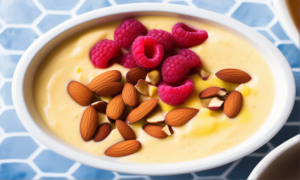 Low-Calorie Mango-Almond Smoothie Bowl
Low-Calorie Mango-Almond Smoothie Bowl
 Low-Calorie Huevos Rancheros Tacos
Low-Calorie Huevos Rancheros Tacos
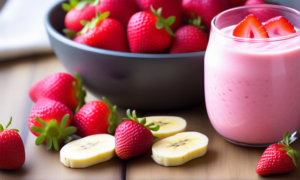 Low-Calorie Strawberry-Banana Protein Smoothie
Show All
Low-Calorie Strawberry-Banana Protein Smoothie
Show All
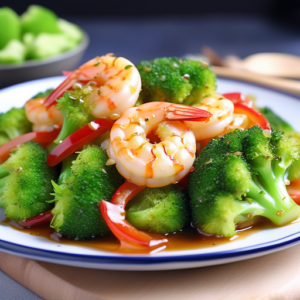 Lemon-Garlic Shrimp with Sautéed Broccoli
Lemon-Garlic Shrimp with Sautéed Broccoli
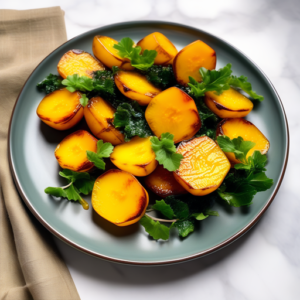 Honey-Glazed Roasted Golden Beets with Thyme
Honey-Glazed Roasted Golden Beets with Thyme
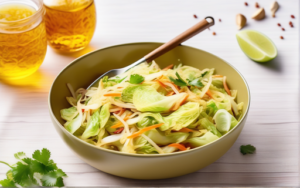 Sesame-Ginger Cabbage Stir-Fry
Show All
Sesame-Ginger Cabbage Stir-Fry
Show All

 Follow
Follow



